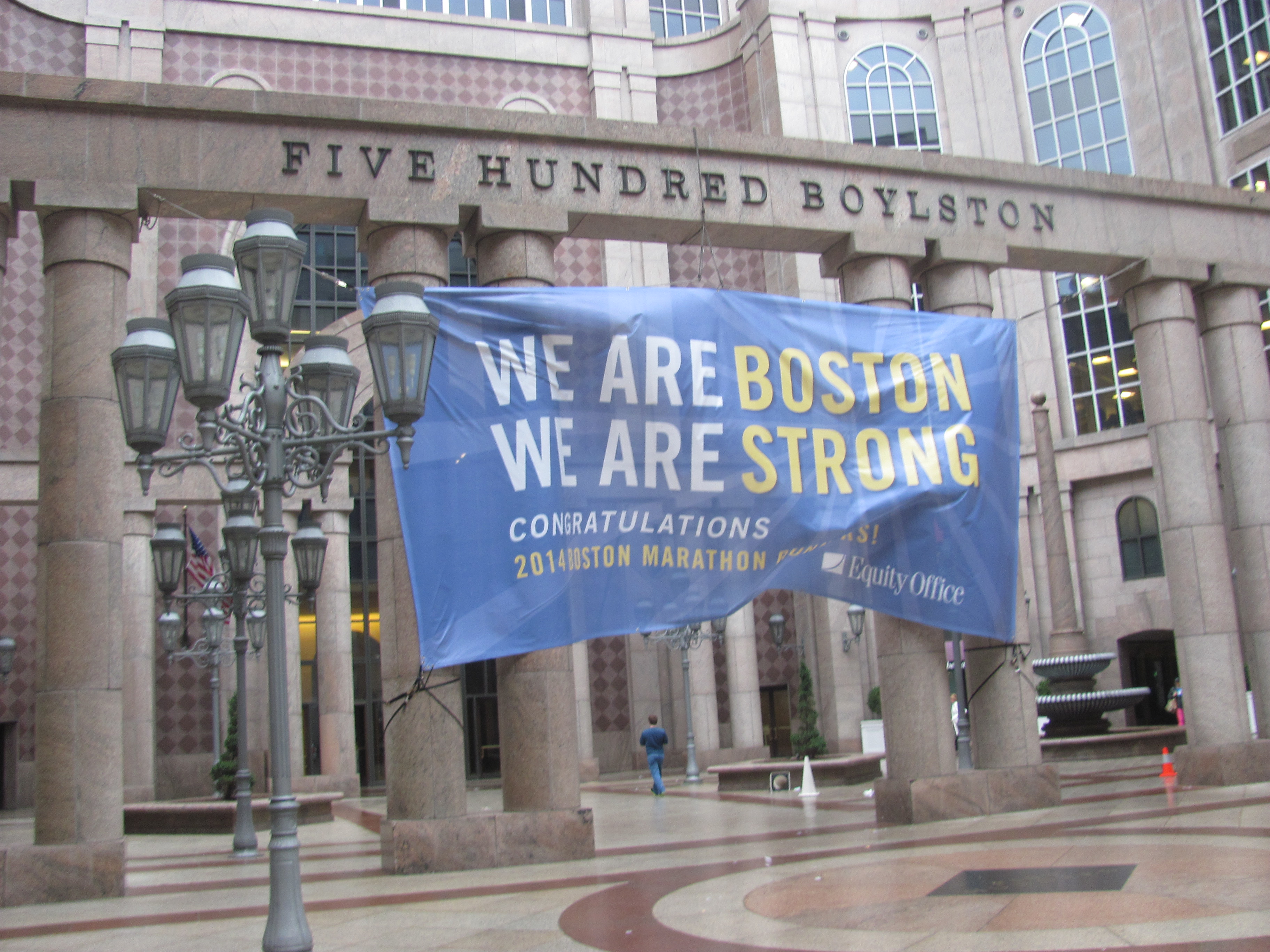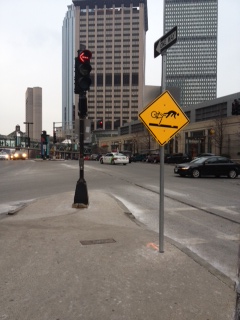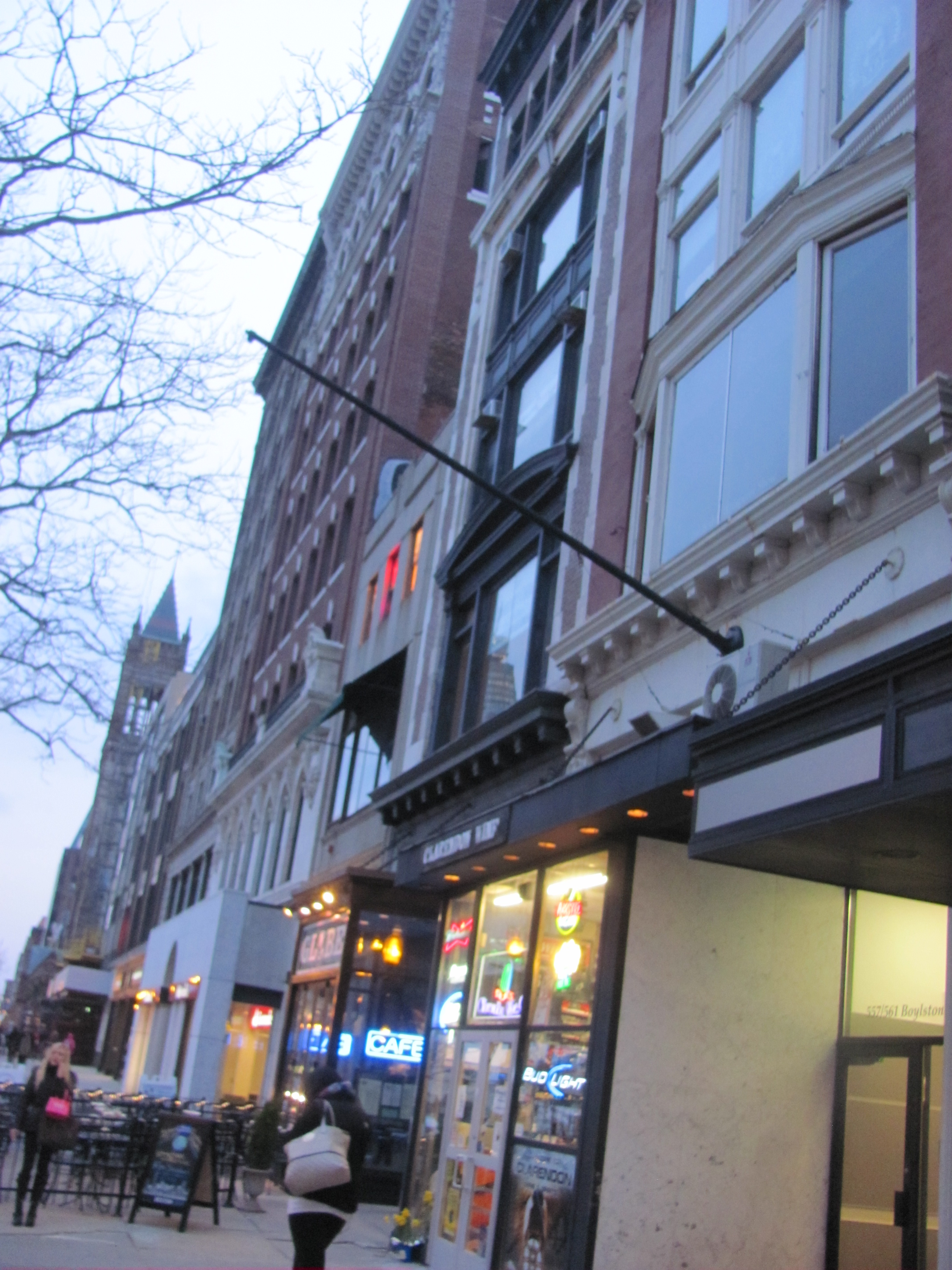 The statue of the square's namesake-John Singleton Copley-located in the heart of the green square.
The statue of the square's namesake-John Singleton Copley-located in the heart of the green square.
A place can be read just by observing what communities, buildings or institutions have endured and comparing to the ones which have changed over time. These trends tell a lot about what the city planners had in mind, as well as what the citizens have used the places for and the values they hold most stringently. Walking around Copley Square gives a sense of what the area is about today, as it has become a public square and gathering place, but it is also easy to see where it came from, since many of the surrounding buildings have stood here for over a century. I was able to deduce some patterns to the buildings’ architectural styles and the layout of the blocks I studied, most of which were strongly supported by the observations I made by analyzing maps of the square from my previous research. Copley Square is an area of the city that epitomizes Boston as a historic and cultural city, as it is adapting with peoples’ use over the years.
 Juxtaposition of the two architectural wonders of the site on Clarendon Street.
Juxtaposition of the two architectural wonders of the site on Clarendon Street.
In the excerpt from Power of Place, Dolores Hayden explores the process of evolution and rooting of a city. While walking around my site and imagining a time when just a few of the standing buildings were present, and other ones in places where new ones have been constructed, it is enlightening to imagine the progression of these developments. They are not only important in terms of what the site has physically become today, but also in terms of the significance and cultural value of the site. Since Copley Square is such a busy and populated area, I was able to observe some of the social phenomena which shaped the site. Hayden summarizes the development of a place with the seed of an industry as well as the fulfillment of social needs: housing, churches, etc., and then followed by the configuration of streets and systems. [1] The people who are living or working in the area will always have their opinions about or protests to new buildings and support of distinct businesses or congregations. Clearly the development of the city is not independent of the population. This is the reason for the sustainment of the historical churches and for the development of other infrastructure. As an example, one can look to the development of one of the tallest and most recognizable buildings in the skyline of Boston, the John Hancock tower. This was a major expansion for a large company already located in the Back Bay of Boston, and in an area which was always fairly historically significant, new developments can cause some disapproval. In a discourse on the building’s design, architect Cobb notes that “the tower's uniformly gridded and reflective surface, stripped of all elements that might suggest a third dimension, mutes the obtrusiveness of its enormous bulk and defers in all respects to the rich sculptural qualities of its much smaller neighbor.”[2] Even though it was constructed almost 200 years later, the building is given its place in the historic Copley Square, since residents and visitors appreciate and hold significance to the Trinity Church.
 The pavement crossing and ye olde lamposts on the green square in Copley.
The pavement crossing and ye olde lamposts on the green square in Copley.
 A view of the old style benches in alignment with the design of the square.
A view of the old style benches in alignment with the design of the square.
If isolated from the rest of the busy city, the square green space which my site is centered upon would feel like it had been transformed back to a park of the 1800s. The Trinity church, which was erected in 1793, still stands with its gothic, Romanesque architecture as the stunning focal point of the area. The green space is also decorated with wooden benches and wrought iron fences. Despite the traffic which pulses about on the streets surrounding the square, the park itself flourishes and is populated by visitors and Boston residents. The partial pavement, pictured below, is a portion of the square that indicates the truncating of Huntington Avenue. The intersection with Huntington Avenue was an interesting aspect of Copley Square that caught my attention while looking through and comparing maps. I knew it was not crosscutting the square today, because I had been to the site and seen the way the traffic from the main avenue was directed squarely around the park. It was not until visiting the site after having studied maps that I realized that the design of the square must have been shaped by the presence of the road, since the grass area is actually divided into two pieces where the road was once laid. This division, as well as the way the traffic is redirected along St James Avenue and Clarendon St are traces of the past use of that portion of the square for vehicular traffic. The other details that I noticed were the common reoccurring lampposts designed to look as if they were from a past century instead of modern times. Nothing about the square looks outstandingly modern in design, although the area is anything but outdated in the city of Boston, considering the surrounding blocks are always busy and have become the home of modern shops and popular restaurants.
The Boston Public Library
 The Old South Church
The Old South Church
 Plaque indicating the construction of the church as one of the first buildings in the square.
Plaque indicating the construction of the church as one of the first buildings in the square.
The Boston Public Library located across the street from the green square is itself an indicator of a trend in Copley Square. The library still holds a stately presence today in the spot where it was founded, only having expanded and grown in the past decades. The library is an important cultural and academic resource for the area and since it is located in Copley Square, it becomes the anchor of such activities in the square. Although many institutions have come and gone from the area, Copley was once rich in the arts and sciences. It is not as much used for this today, since the Institute of Fine Arts and the Massachusetts Institute of Technology have both been uprooted and relocated from their precious locations, but the public library does remain to carry the torch for the academic culture in this part of Boston. The other institutions which have held their ground in the square are mainly of religious value. Evidently the Trinity Church as well as the Old South Church on the corner of Boylston and Dartmouth Street are two widely revered churches which still stand in the heart of the Back Bay.

 Even the modern storefronts, as pictured here, mimic the elaborate architectural styles of the late 19th century churches and buildings.
Even the modern storefronts, as pictured here, mimic the elaborate architectural styles of the late 19th century churches and buildings.

 The remnants of an old bank outside of a CVS Pharmacy.
The remnants of an old bank outside of a CVS Pharmacy.

 The inscription on the ground indicating past winners of the Boston Marathon.
The inscription on the ground indicating past winners of the Boston Marathon.
 Displays on Boylston Street in support of the runners.
Displays on Boylston Street in support of the runners.
 A view down Dartmouth street of the Copley Square transit stop, as well as the edge of the Old South Church and Boston Public Library.
A view down Dartmouth street of the Copley Square transit stop, as well as the edge of the Old South Church and Boston Public Library.
 The visible layers on the site boundary, bounded by the interstate.
The visible layers on the site boundary, bounded by the interstate.
 Different levels and ages of storefronts on Boylston Street.
Different levels and ages of storefronts on Boylston Street.
Ultimately the city of Boston and its residents will always take pride in its history and tradition. I would dare to predict that in the next half a century or even beyond, the Trinity Church and Copley Square area will remain intact and relevant, but it ought to also continue to adapt and grow to suit the needs of the people of Boston. The aesthetic can still remain the same with some adjustments to the use and applicability of the properties. Hopefully the square will continue to flourish and be well known by natives and outsiders alike.
Bibliography 1-Hayden, Dolores, The Power of Place: Urban Landscapes as Public History (MIT Press), 22-23. 2-Cobb, Henry. http://www.pcf-p.com/a/p/6710/s.html.